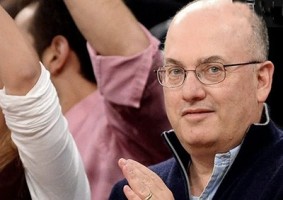queens horticulture
Horticulture In Queens
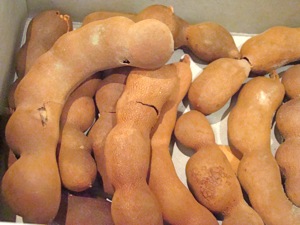 Queens Historical Society Presents History Of Queens Horticulture
Queens Historical Society Presents History Of Queens Horticulture
DRAFT / WORK IN PROGRESS. Continued. October 17, 2011 / Flushing Neighborhood / Food & Wine / Queens Buzz. When I arrived Jim Driscoll, former president of the Queens Historical Society [QHS] had just begun delving into the history of the apple trade. He specifically spent time on the Newtown Pippin apple which in the 17th and 18th centuries was a very popular apple in colonial America. [I had missed the introductions of the panel by moderator and Queens Historian Jack Eichenbaum, who had been introduced by Pat Sherwood, president of the QHS.]
I. Dutch Colonial Influence In Flushing Queens
The Dutch were the first to settle the Queens area and many of the names given the localities hundreds of years ago, still persist today, albeit in an Anglicized form. Examples of neighborhoods today with Dutch heritage include Middelburg, Elmhurst and Flushing – to name only a few. Middenburgh was the original Dutch name of the Newtown Creek area. Middenburgh was renamed Newtown by the English when they took over New Amsterdam [renaming it New York] in 1664. And it was there that the colonists grew, harvested and exported for sale thousands of boxes of apples a day. The apples went to the New York harbor where they were shipped around the colonies as well as to Europe.
Horticulture In Queens - The Flushing Nurseries
This example lead Jim to talk about the origination of the three main nurseries of the Flushing / Jamaica area: Prince, Bloodgood and Parsons. A nursery in those days included a large farm and buildings akin to greenhouses in which the plants were cared for and grown.
Prince Nursery in Flushing Queens in 1737
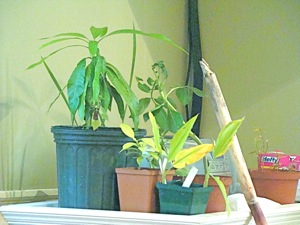 The Prince Nursery was, at one time, the largest nursery in New York. It began in 1737 by Robert Prince and his son, William. The nursery was held in the family until about 1870. The official name of the Prince Nursery was the Linnaean Gardens, named after the famous Swedish botanist, Carl Linnaeus who developed the system for categorizing living things.
The Prince Nursery was, at one time, the largest nursery in New York. It began in 1737 by Robert Prince and his son, William. The nursery was held in the family until about 1870. The official name of the Prince Nursery was the Linnaean Gardens, named after the famous Swedish botanist, Carl Linnaeus who developed the system for categorizing living things.
The Princes were industrious growers and marketers. They published a catalogue of a couple of pages from the early beginning of the nursery which helped them sell their goods. At the time the nursery sold mainly food, like apples, carrots, squash, cabbage and the like.
Bloodgood Nursery in Flushing Queens in 1790's
The second nursery, Bloodgood, was started shortly after the American Revolutionary War, likely in the early 1790’s by [Thomas?] Bloodgood. This nursery includes foodstuffs as well as trees. The Bloodgood nursery was sold to the King & Murray families around 1830.
Parsons Nursery in Flushing Queens in 1838
The Parsons Nursery was started in 1838 by Samuel Parsons. Samuel Parsons, Sr. was an innovator who imported new items, such as maple trees from Japan, green gauge plums from England, and other unusual plants. By this time American / Flushing horticulture had evolved to include not only practical items such as food, but also aesthetically pleasing items such as flowers [Dutch tulips] and unusual trees.
II. Henry Hudson & The Dutch East India Company
Our second speaker was Chuck Wade who had spent some twenty years working at the Queens Botanical Garden and working with the students at Flushing High School. Chuck started his discussion of horticulture in Queens around 1609 with Henry Hudson’s trip up the river now named after him. Hudson was sailing for the Dutch East India Company at the time he conducted his explorations of the 315 mile long waterway.
Early Horticulture & Colonial Food Trading
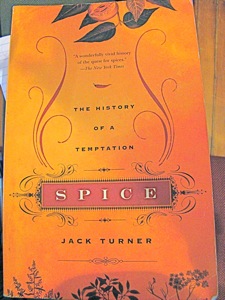 Chuck notes that trade is an important part of the story of the Americas. Beginning with Columbus [a point repeated by the next panelist Ferdinand Gerber] trade to and from the Americas was what motivated the seafarers to explore the new world. The Dutch East Indies merchants came with woven cloth to trade for animal skins [fur hats were the vogue in Europe] and tobacco [immensely popular]. New plants, animals, furs and of course gold, spurred Europeans to come to the new world in droves, and foods and plants were an important part of the trade. The pilgrims landed in 1620 just south of Boston on Cape Cod, and by 1623 the American shores were beginning to teem with Europeans seeking their fortunes in trade [most notably beaver skins].
Chuck notes that trade is an important part of the story of the Americas. Beginning with Columbus [a point repeated by the next panelist Ferdinand Gerber] trade to and from the Americas was what motivated the seafarers to explore the new world. The Dutch East Indies merchants came with woven cloth to trade for animal skins [fur hats were the vogue in Europe] and tobacco [immensely popular]. New plants, animals, furs and of course gold, spurred Europeans to come to the new world in droves, and foods and plants were an important part of the trade. The pilgrims landed in 1620 just south of Boston on Cape Cod, and by 1623 the American shores were beginning to teem with Europeans seeking their fortunes in trade [most notably beaver skins].
Dutch New Amsterdam Influence on English New York
In 1664 the Dutch turned New Amsterdam over to the English in a peaceful transfer, at which time it was renamed New York. But nonetheless, the Dutch colonists had brought their native grains, including wheat, oats, rye and buckwheat. These became an American staple and can be seen today in whole grain breads.
Dutch Foods in the New World
Dutch buckwheat fields were harvested and made into flapjacks and pancakes, which were garnished with honey and jams. ‘Waffle’ irons were taken along from the old country and eventually ‘wafers’ were made in a similar process.
The Dutch also introduced koejkes or cookies to the new world. In 1809, author Washington Irving writes about apple pies, peaches and sweet dough in lard … which are today known as donuts. Roland mentioned that one can still find the forerunner to donuts in the Albany area.
The Use of Native American Foods in Colonial Dutch Cooking
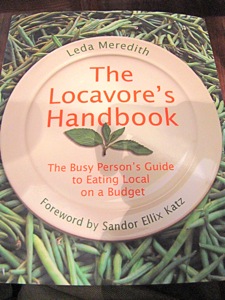 He went on to talk about pumpkin filling in crusts made with corn / maize from the Indians. Today we enjoy them as pumpkin pies. And the Dutch brought over kolsla or cole slaw was we know it, which is cabbage soaked in oil, vinegar and pepper. Today mayonnaise is added too. At this juncture he mentioned that the Hellman family of Hellman’s mayonnaise came from Flushing and are buried in the Flushing cemetery.
He went on to talk about pumpkin filling in crusts made with corn / maize from the Indians. Today we enjoy them as pumpkin pies. And the Dutch brought over kolsla or cole slaw was we know it, which is cabbage soaked in oil, vinegar and pepper. Today mayonnaise is added too. At this juncture he mentioned that the Hellman family of Hellman’s mayonnaise came from Flushing and are buried in the Flushing cemetery.
And the Dutch are well known for their cheeses and love of diary products. At the time of colonial America one didn’t drink milk [prior to Louis Pasteur’s discovery] and so they drank beer, a product for which the Dutch are also well known. The Dutch used to lock up their alcohol at night, by putting bars on their refrigerators. This was to keep it from lodging travelers, stealing the beer at night. Hence, we were told, came the moniker of taverns used across the nation as ‘bars’.
Evolution of Horticulture & Restaurants in the United States
Around the 1820’s lodging travelers would generally get food at the guest house at night. They were frequently treated to the foodstuffs of the day including oysters [oyster bay long island and also the East River was once chuck full of them]. Eventually these taverns & lodges started selling food during the day and became the forerunners of modern day restaurants. One locale opened up the competition by hiring a chef from France.
Foods and spices came in from around the world. Cinnamon, ginger, currants, mace [nutmeg], and pepper. Pepper was dispensed sparingly at the pharmacy and was considered a rare treat.
Colonial Dutch Foods Persist in Modern Day America
Dutch Colonists ate about six times each day. They would have grains like pancakes and bread for breakfast, a mid day lunch of cookies and cake, tea with sandwiches and cake in mid afternoon, dinner and cold fish and cake as a bedtime snack. They drank a lot of ale because they knew that ale water was ok to drink, while tap water generally wasn’t.
Many Dutch foods persist today. They included apple garnish with pork, corn meal, beer and ale, bowles [an after dinner drink of the period], curacao, beer, coffee and candy, carrot soup, stuffed veal with bratwurst, hot curried cole slaw, Dutch meal and potato pie, chocolate layer cake, apple cake.
Dutch Lexicon - Adaptation of Dutch Words in American Vocabulary
Some of today’s lexicon also comes from the Dutch. The word Yankee was a diminutive term meaning ‘little john’. Caboose was the ship’s galley, elope meant to run away, Flushing was originally named after a city in the Netherlands named Vlissingen which means river flowing, and pinkie is the Dutch name for little finger. Other anglicized Dutch words include cookies, knickerbockers [short pants], cole slaw, curl in the hair and pickles [Dutch vegetable].
III. Horticulture In Queens - Global Food Trading 1700's - 1900
Onto our next panelist, Fred J. Gerber who also spent twenty years working for the Queens Botanical Garden. Fred opened up the vista on the trading of foodstuffs around the world.
Slide Show Of QHS Horticulture Lecture
Click this link to go directly to the photo album containing slides of Queens Horticulture. Use the arrow on the slide show control panel to view photos at your own speed.
$element(ophoto,photo_slideshow,154,520,,5.00,fade)$
Flushing / Corona Related Info
Click here to go to the Green Queens / Eco-friendly Queens section of this site. Click here to see a related report about an LICBDC conference on Solar Energy / Solar Panels in Queens and click here to read about solar panels and windows and doors in Queens.
Click this link for promotions by advertisers in Queens.
Click this link to go to the Flushing Neighborhood.
Site Search Tips. 1) For best results, when typing in more than one word, use quotation marks - eg "Astoria Park". 2) Also try either singular or plural words when searching for a specific item such as "gym" or "gyms".
$element(bwcore,insert_search,N)$
Click this link to search for something in our Queens Business Directory.
$element(adman,groupads,Sectional Ad)$
Click the log in link below to create an ID and post an opinion.
Or send this story to a friend by filling in the appropriate box below.












